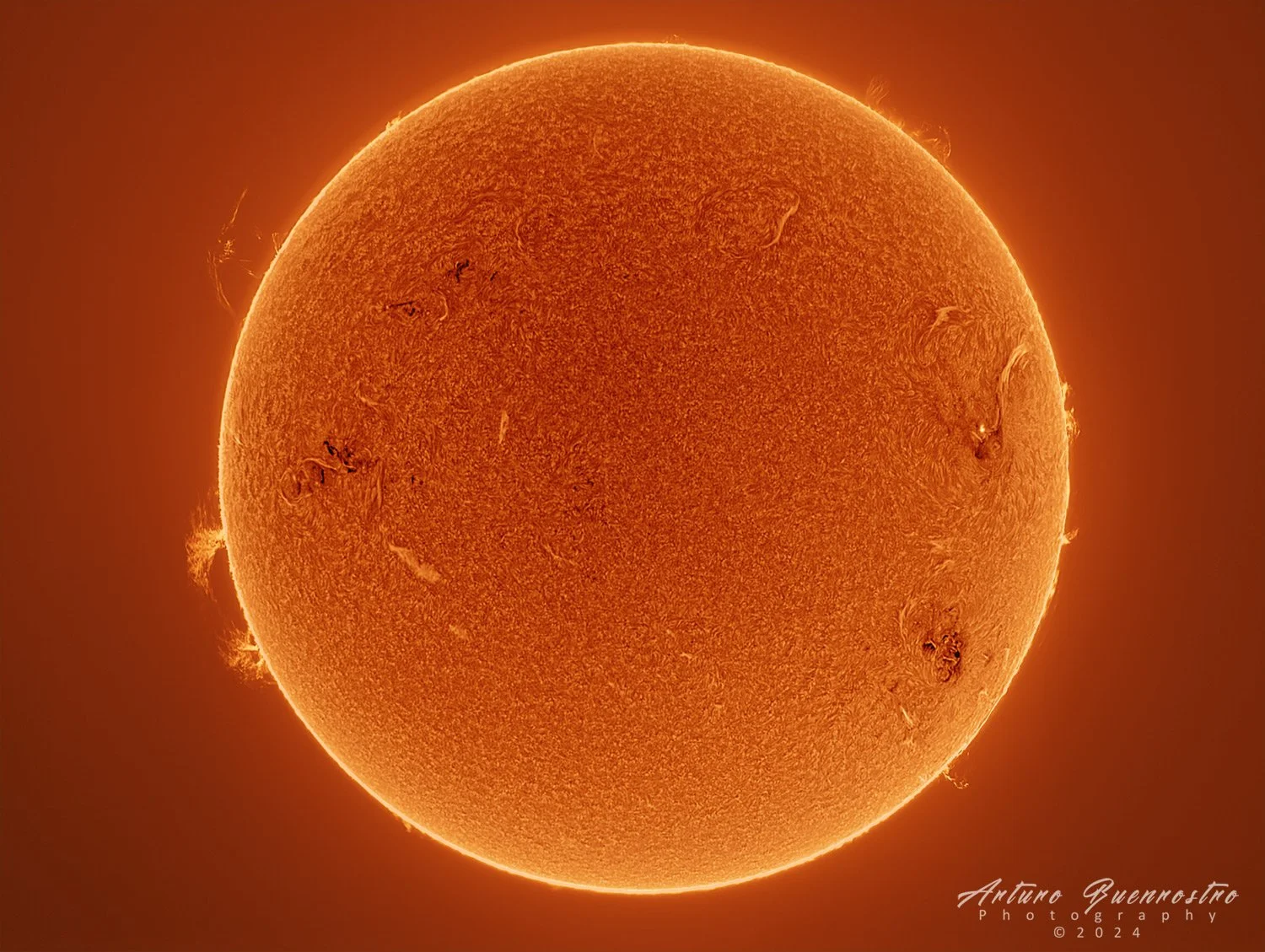
AAPOD2 Image Archives
HA sun
Featured Astrophotographer on AAPOD2
Before the eclipse
At the heart of our solar system, the Sun reigns supreme, illuminating and nurturing the planets that orbit around it. As a G-type main-sequence star, the Sun is a vast sphere of superheated plasma, primarily composed of hydrogen and helium. Its immense gravity holds the solar system together, while its radiant energy fuels life and drives the dynamic processes of our planet.
With a diameter of about 1.4 million kilometers (870,000 miles), the Sun is approximately 109 times larger than Earth, yet it appears as a relatively small, bright disc in our sky due to its vast distance of about 93 million miles (150 million kilometers) from Earth. Despite its seemingly tranquil appearance, the Sun is a dynamic and ever-changing celestial body, marked by features such as sunspots, solar flares, and coronal mass ejections. These phenomena are driven by the Sun's complex magnetic field, which interacts with its hot, turbulent outer layers known as the corona.
This image of the Sun was captured just 20 days before the solar eclipse of 2024, adding a poignant context to its portrayal. Taken with specialized solar observation equipment and precise imaging techniques, this photograph offers a glimpse into the Sun's intricate surface features and dynamic activity. It serves as a reminder of the Sun's ongoing role in shaping our world and the celestial events that capture our collective imagination.
Sun comparison in Cak and Hydrogen Alpha
Sun in CaK and HA
TS 80ED f/7, Lunt modulo CaK B1200, Lunt LS60THa/B1200, Grasshopper3 GS3-U3-28S4M.
A comparison between FD Cak and H-Alpha taken 1/9/2020. I used a Lunt LS60THa/B1200 and a TS 80ED f/7 with a Grasshopper3 GS3-U3-28S4M.
Copyright: Salvo Lauricella



